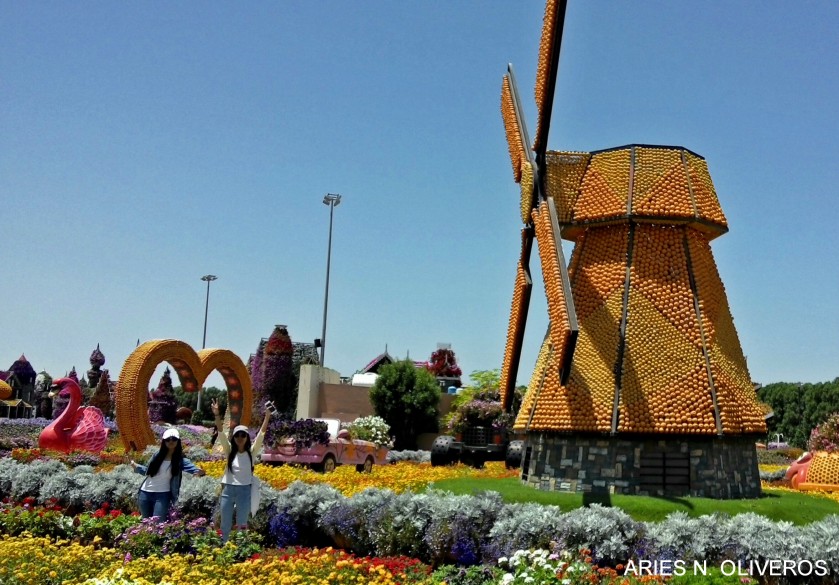 PERKS OF TRAVELING. After winning in the 2016 Trust for Sustainable Living International Schools Essay Writing Competition and Debate, Maria Janine Juachon and Abigail Mary Claire Ablang of Philippine Science High School Central Luzon Campus enjoy their visit to the Miracle Garden in Dubai, United Arab Emirates. (Aries N. Oliveros)
PERKS OF TRAVELING. After winning in the 2016 Trust for Sustainable Living International Schools Essay Writing Competition and Debate, Maria Janine Juachon and Abigail Mary Claire Ablang of Philippine Science High School Central Luzon Campus enjoy their visit to the Miracle Garden in Dubai, United Arab Emirates. (Aries N. Oliveros)
My passion for taking photographs started back in my third year in high school. As a campus journalist, I represented my school in a photojournalism contest. Luckily, I won! And the rest is history.
The Miriam-Webster online dictionary defines photojournalism as the photographic presentation of news stories or in which a high proportion of pictorial presentation is used. A photojournalist may include a supplemental caption for additional information about the subject.
A very important aspect of photojournalism is composition. It is the placement or arrangement of visual elements in a work of art. Composition makes a photograph distinct. It also enhances the visual and artistic value of a photograph.
Here are some of basic principles of composition.
1. Tone refers to the interaction of light against dark shades in varying degrees and helps to set the mood of a photograph.
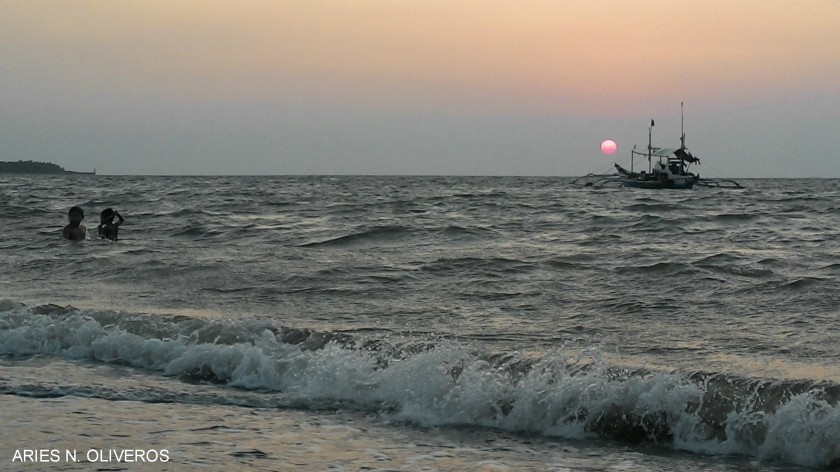
SUMMER DUSK. The fisherfolk and kids in Bancaan, Naic, Cavite keep themselves busy in the setting of the sun. (Aries N. Oliveros)
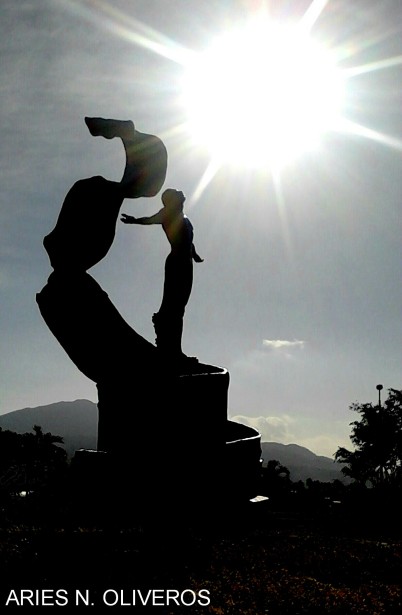
EMBRACING ONE’S PURPOSE. The Oblation at the UP Open University in Los Baños, Laguna stands as the institution’s undying symbol of sacrifice and service to the nation. (Aries N. Oliveros)
- Contrast shows the amount of difference between colors, such as a photo showing two colors on the opposite side of the color wheel. They interact with each other by complementing their striking difference.

HAPPIEST PLACE ON EARTH. The grand parade of iconic characters delights tourists in Hong Kong Disneyland. (Aries N. Oliveros)
In terms of editorial value, the following picture shows societal contrast and gives this principle of composition a deeper meaning.
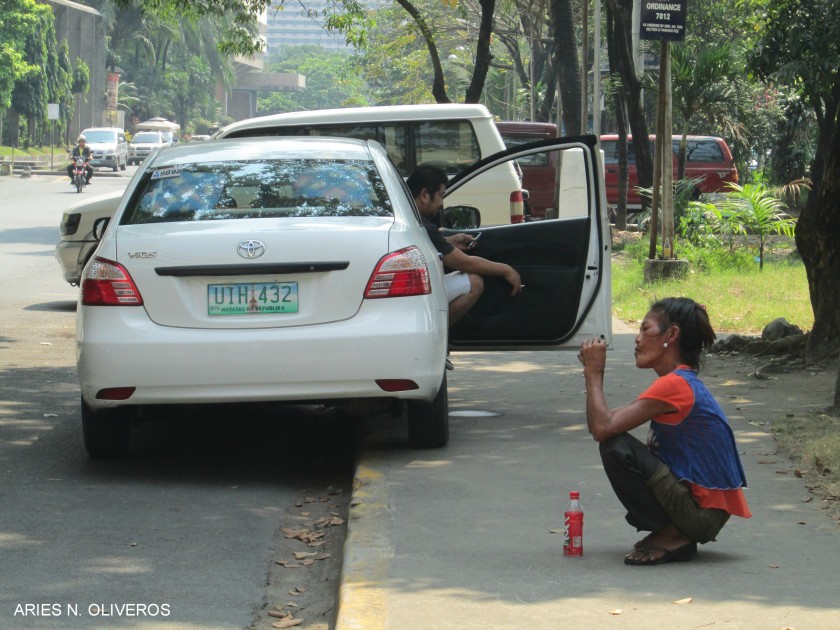
SOCIAL DISPARITY. The man and the woman in Ermita, Manila show us how social status affects the way people kill time. (Aries N. Oliveros)
- Perspective showcases the dimension of objects and the spatial relationship between them. Through linear perspective, the human eye judges distance by the way elements within a scene diminish in size, and the angle at which lines and planes converge.
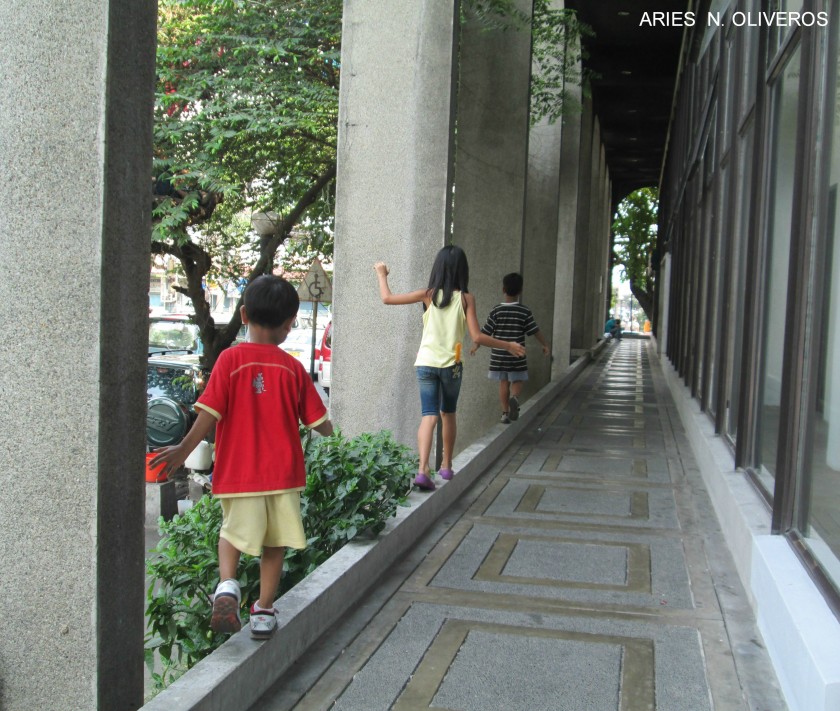
FOLLOW THE LEADER. Children perform a balancing act, as they pass by a building along Padre Faura Street in Ermita, Manila. (Aries N. Oliveros)
- Symmetry refers to balance or proportion in arrangement or placement of visual elements. It soothes the eyes and mind of the viewer.
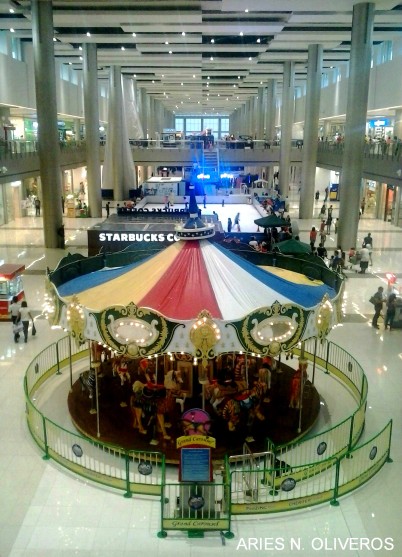
MALL OF FUN. Shoppers in SM City Clark not only enjoy the mall’s ambiance but all the rides that bring fun to children of all ages. (Aries N. Oliveros)
- Pattern involves lines, shapes, and colors within a picture that occur in an orderly way and enhances the attractiveness of photographs.
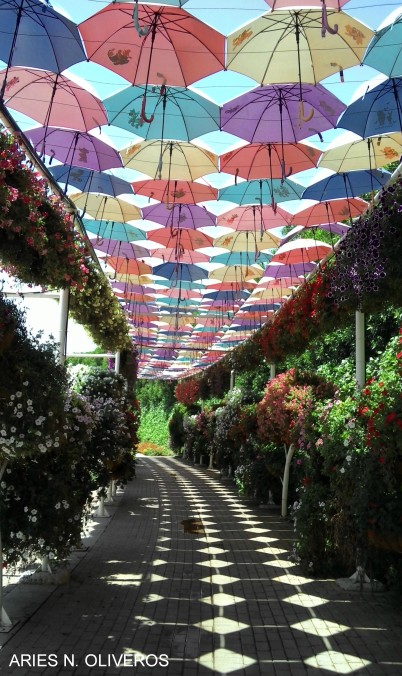
DELIGHTFUL PATH. The Miracle Garden in Dubai has gained worldwide popularity because of its amazing landscape. (Aries N. Oliveros)
- Texture gives realism and character to a picture. It shows the softness, smooth, or roughness of the subject. Texture exists in the surface details of subject. It is the element that makes an otherwise two-dimensional object seem like it could be experienced through touch.
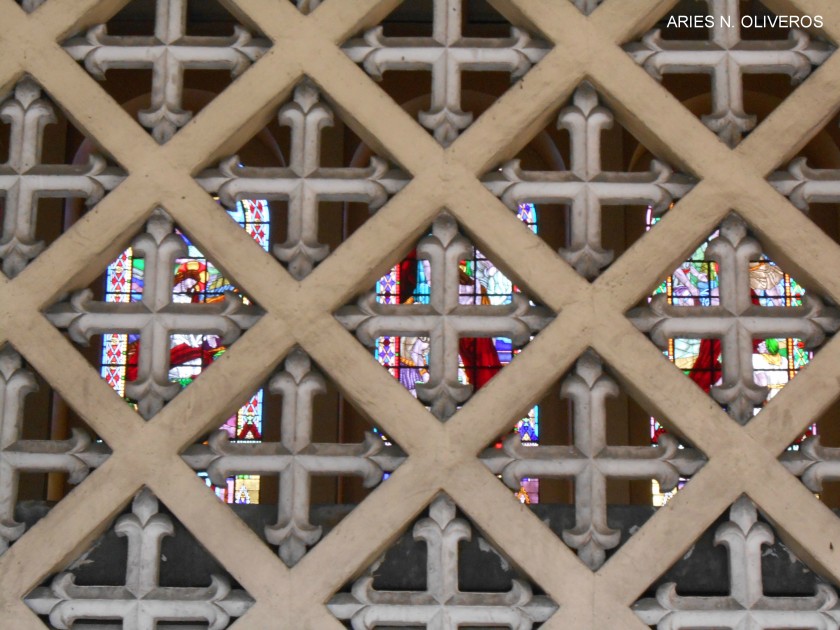
HERITAGE OF FAITH. The Spanish modern style architectural design of the reinforced-concrete building of the Santo Domingo Church in Quezon City stands as a living witness to the faith of its parishioners and devotees of Our Lady of the Holy Rosary of La Naval de Manila. (Aries N. Oliveros)
- Depth of Field refers to the zone of acceptable sharpness within a photo that will appear in focus. Depth of field varies depending on camera type, aperture and focusing distance, although print size and viewing distance can also influence our perception of depth of field.
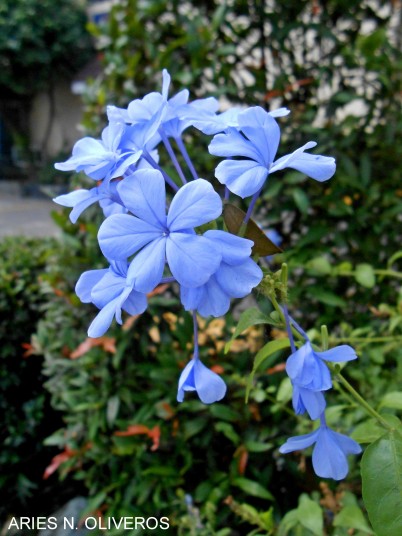
TRANSITORY BEAUTY. Just like other living things, the bunch of flowers experience life and death in the passing of time. (Aries N. Oliveros)
- Rule of Thirds means that the subject is not in the middle of the picture. Instead, the subject is one third of the way into the picture space (either at the top or bottom, and from either left or right). The idea is that an off-center composition is more pleasing to the eye and looks more natural than one where the subject is placed right in the middle of the frame.
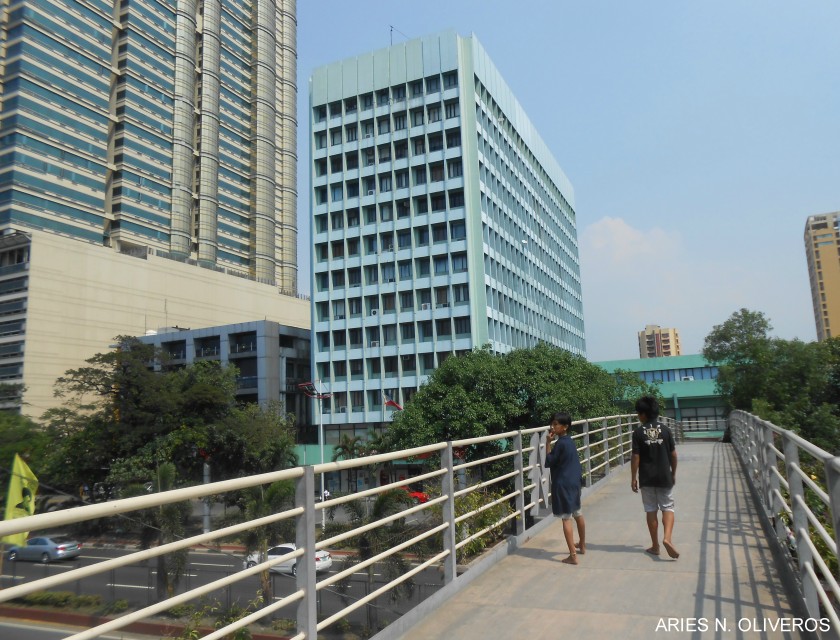
BEST BUDDIES. The footbridge across Roxas Boulevard, Manila helps people cross the road safely. (Aries N. Oliveros)
We can capture the beauty of life, irony of events, diversity of people, and versions of truth through photojournalism. All we just need is a camera, right timing, and keen eyes to capture the images of reality.
References:
http://photoinf.com/General/NAVY/Photographic_composition_Balance.htm
http://www.exposureguide.com/focusing-basics.htm
http://www.merriam-webster.com/dictionary/photojournalism
http://www.ultimate-photo-tips.com/index.html


Hey Kuya Aries! I am pleasantly surprised to know that you are into photography too! This article resonates with me. I have been mesmerized by beautiful photos, and I love capturing moments. This has shown me even more how important photograph is to journalism! Kudos to more informative and artistically crafted articles!
LikeLike
Thanks, Beulah for appreciating my blog! Some of the photos I posted were taken using my cellphone’s camera. Instant photography in this age of technology. The beautiful moments we capture in photos inspires us to strive and to do good things even more. See you soon…
LikeLike